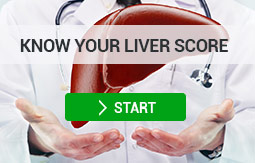What’s in this article
- What is end stage liver disease?
- Available treatment
- Who is at risk?
- Precautions and prevention
What is end stage liver disease?
End stage liver disease also known as chronic failure of the liver, occurs when the liver is at the end of its functioning life. This may be as a result of a long-term illness such as cirrhosis of the liver and progresses over the years to get to this stage. According to the University of California San Francisco, patients with abnormal liver function who develop ascites, variceal hemorrhage, hepatic encephalopathy, or renal impairment are considered to have end-stage liver disease (ESLD).
Treatment available
A liver transplant is the only treatment for end stage liver disease, often no medication can be taken as it will further harm the liver, which will be already very damaged. According to the University of California San Francisco, there are increasing waiting times for organ transplantation, nearly 17% of patients on the transplant wait list die annually and others are not candidates for a liver transplant. Patients with end stage liver disease have many symptoms and disease-related complications that affect survival and their quality of life.
Who is at risk?
People who are at risk of developing end stage liver disease are the following:
- People with an alcohol-induced liver disease
- Cirrhosis sufferers
- Chronic hepatitis B, C and D sufferers
- Those who suffer from autoimmune hepatitis
- Non-alcoholic fatty liver disease sufferers
- People who have diseases that affect the bile ducts such as primary biliary cirrhosis
- People who are exposed to toxins and have a reaction to medications
- Those who have inherited a liver disease such as Wilson’s disease
Find out more about the basics of liver disease with Dr. Tarek Hassanein, M.D.
References
Mayoclinic.org
University of California San Francisco

 (442) 244-5115
(442) 244-5115














